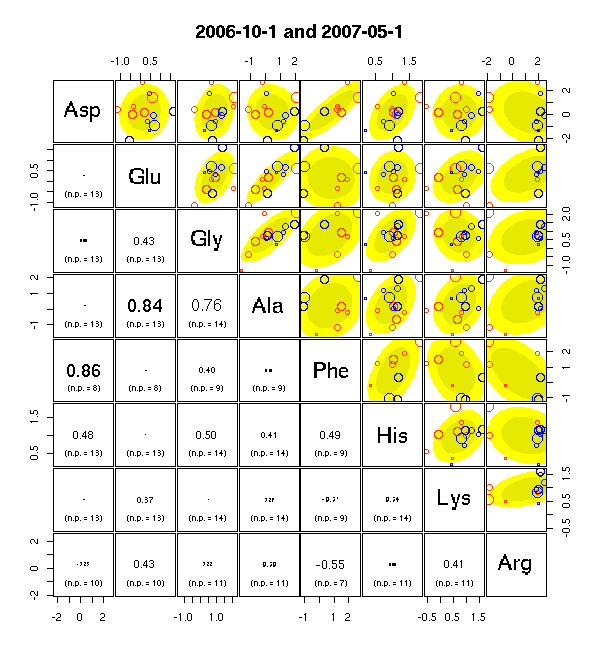pairs(..., upper.panel = pfunc1, ...)
の pfunc1 パネル関数はこんなかんぢで.
plot.ellipse <- function(x, y, level, col)
{
f <- is.finite(x) & is.finite(y)
x <- x[f]
y <- y[f]
exy <- ellipse(cor(x, y), level = level)
polygon(
mean(x) + exy[,1] * sd(x),
mean(y) + exy[,2] * sd(y),
border = NA,
col = col
)
}
pfunc1 <- function(x, y)
{
plot.ellipse(x, y, 0.8, col = "#ffff00")
plot.ellipse(x, y, 0.5, col = "#eeee00")
points(
x, y,
col = c(rep("#ff4000", n.location), rep("#0000ff", n.location)),
pch = 21,
cex = v.col * 0.25
)
usr <- par("usr"); on.exit(par(usr))
par(usr = c(0, 1, 0, 1))
rect(0, 0, 1, 1)
}

